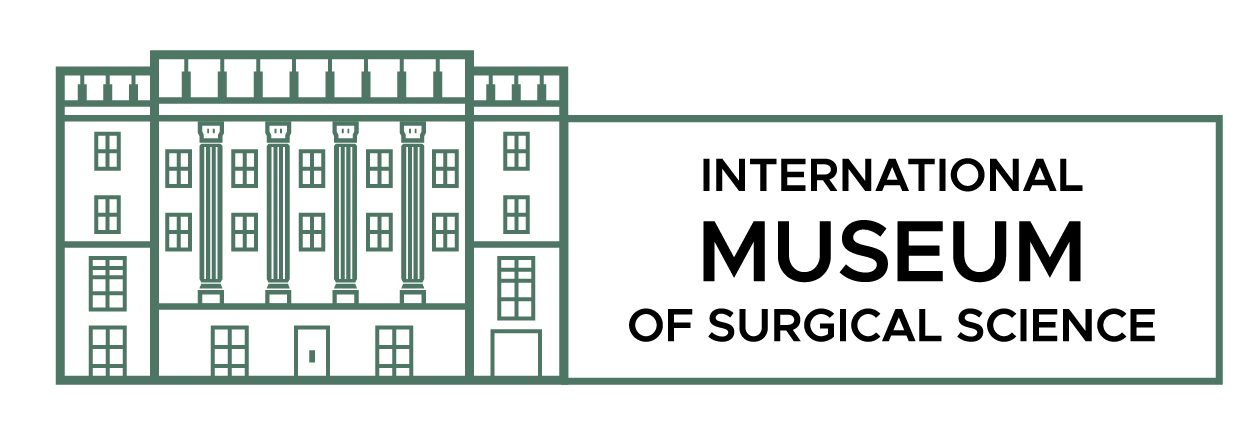Published by Annagh Devitt
Bugs. Many permit some of them; caterpillars and butterflies are beautiful symbols of change, but maggots and moths have much more ominous presence. Lady bugs are mementos of good luck whereas dung beetles are mementos of well…dung. Little spiders here and there are your mosquito-fighting companions but a big one in your home is enough for an evacuation. They have a time and a place, and it’s usually in a well-lit place far away from the viewer. However, some branches of medicine are looking to change that.
Entomotherapy, the medical use of insects, has its origins in traditional medicine (Costa-Neto). Crafted from experiences of individual cultures, traditional medicine nonetheless has surprising similarities even between far-reaching groups. Most notably, many different societies used insects based on the Doctrine of Signatures. Also known as “similia similibus,” or let likes be cured by likes, it holds that the appearance of an animal, plant, or other natural source is a signal for what uses it has for people (Meyer-Rochow). William Cole, a botanist in the 17th century, justified the Doctrine,
“the mercy of God…maketh…herbs for the use of men, and hath…given them particular Signatures, whereby a man may read…the use of them”
William Cole, The Doctrine of signatures
The signature hair on hairy ants, for example, meant that they had powers to cure baldness. Likewise, stick insects were used for weight loss and crickets for throat and ear ailments (Meyer-Rochow).
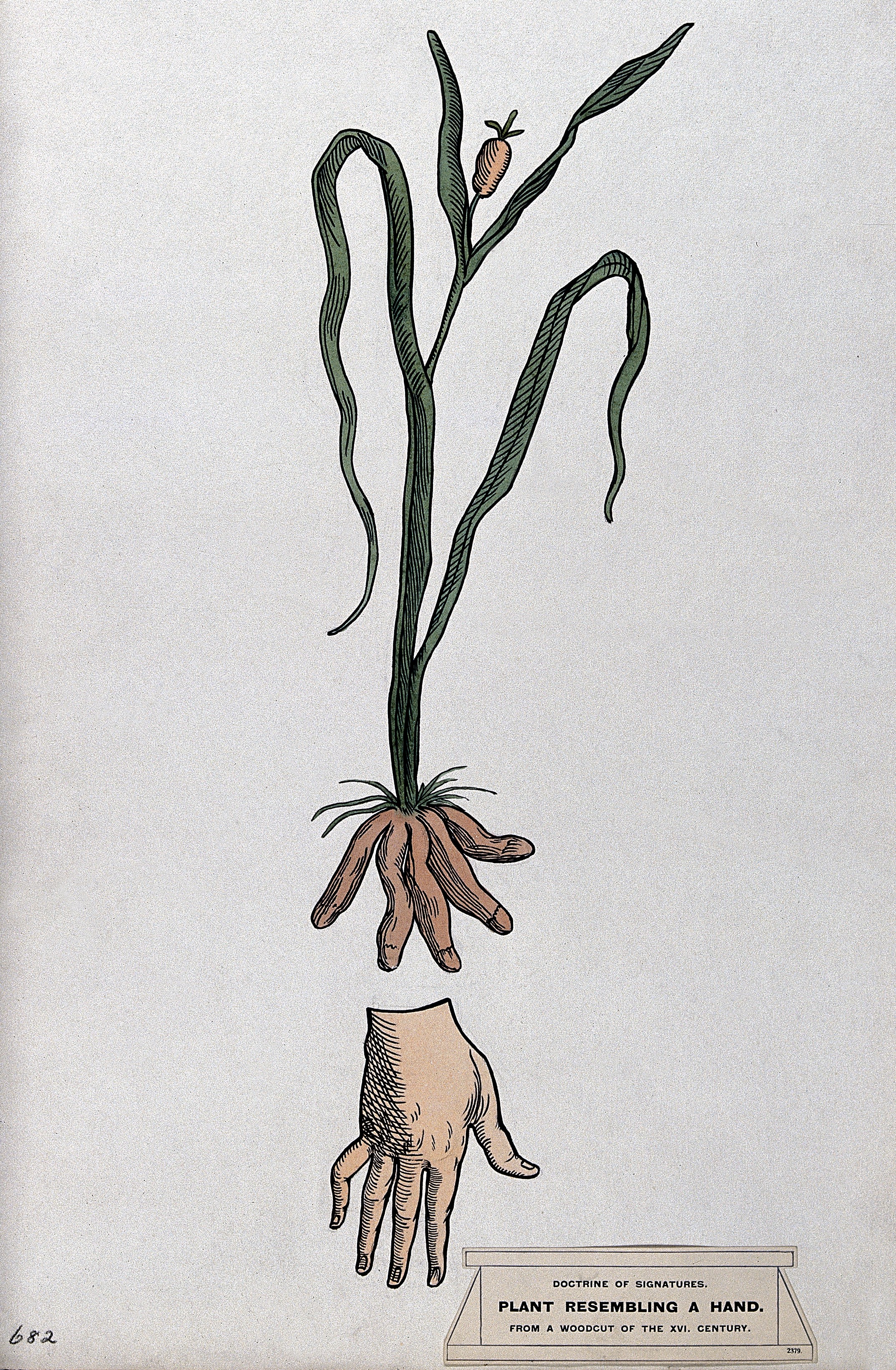
Doctrine of signatures: a plant with roots resembling the human hand, above, and a truncated hand, below. Coloured ink drawing, c. 1923, after a sixteenth-century woodcut illustration. Wellcome Collection.
Especially in the West, the Doctrine of Signatures encompassed this theological worldview that the Universe was centered around man. However, starting with the radical ideas of Copernicus, who proposed that the earth actually revolved around the sun and hence that the earth and man were not the center of the universe, the Doctrine of Signatures eventually lost its scientific ground (Simon). A problem arose however; some of these therapies worked, leaving scientist who declared this concept pseudoscience to reevaluate the idea. Now, the notion that something in nature has a sign from God about its use is not quite true. Those hairy ants, stick insects, and crickets did not have the effect intended by their appearances. A researcher further proved this point by testing 80 heart-shaped leaves for their effect on cardiac related ailments, finding only 21 of them with some medicinal use (Simon). So how is it that some of these cures actually worked?
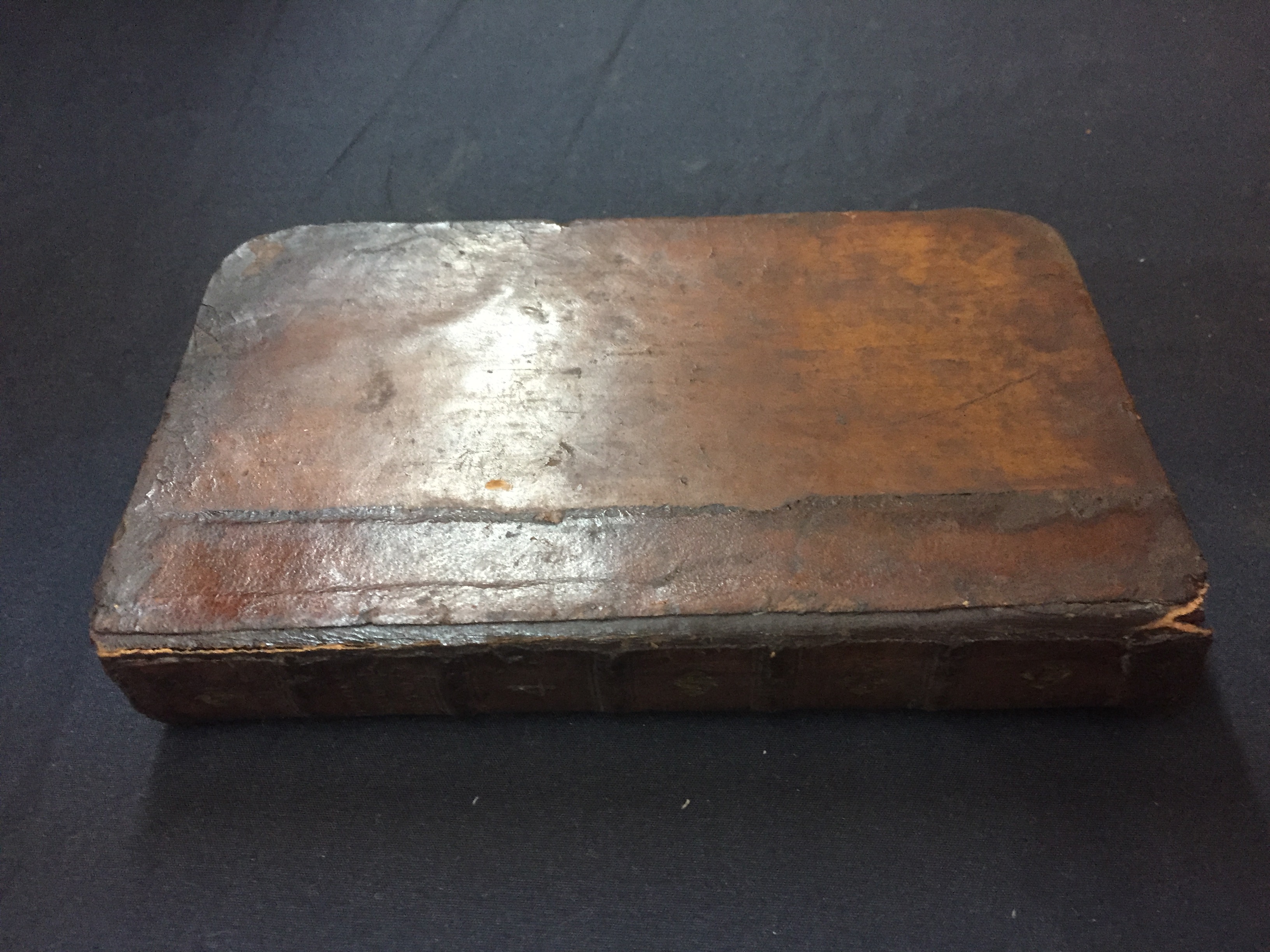
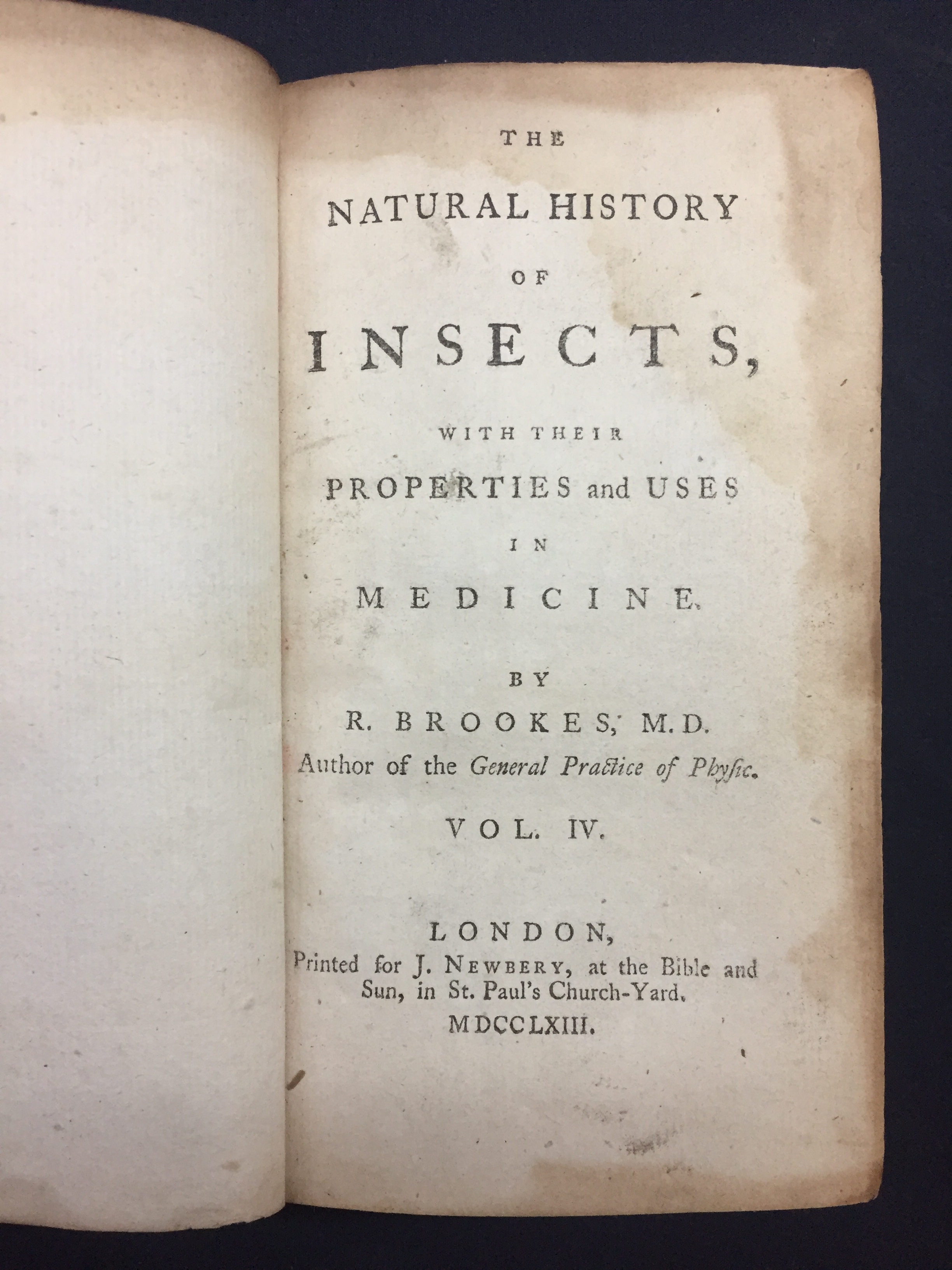
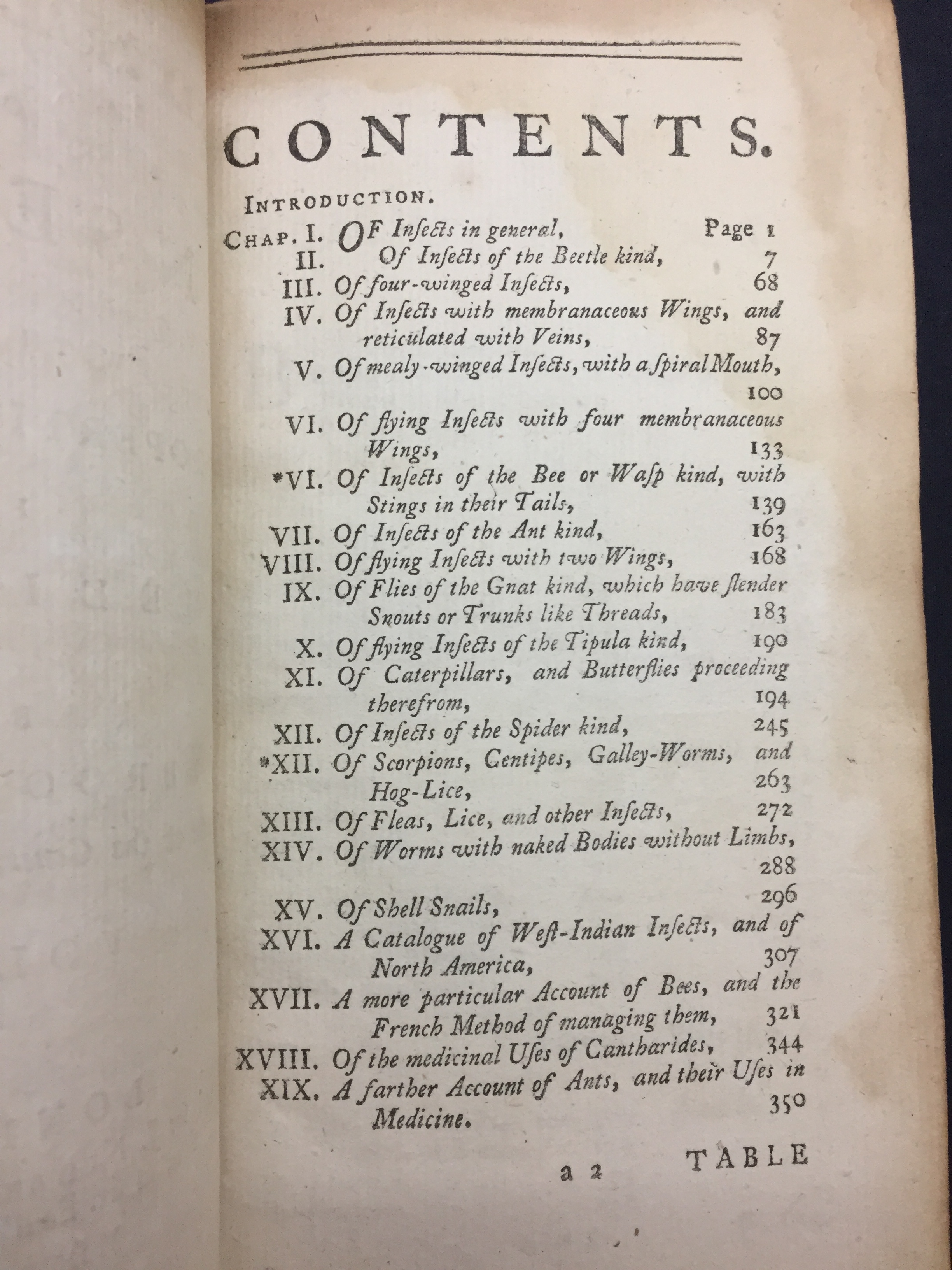
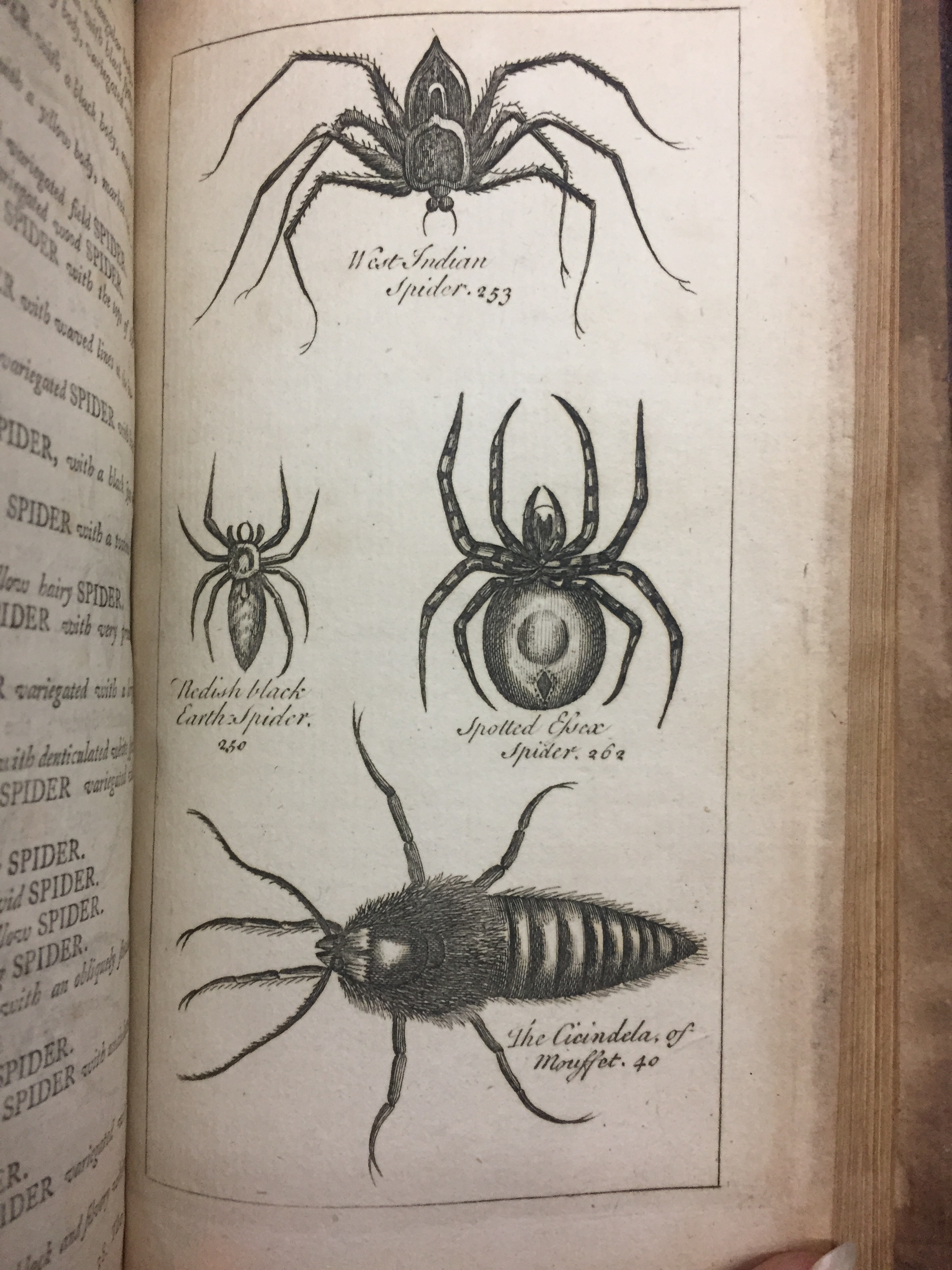
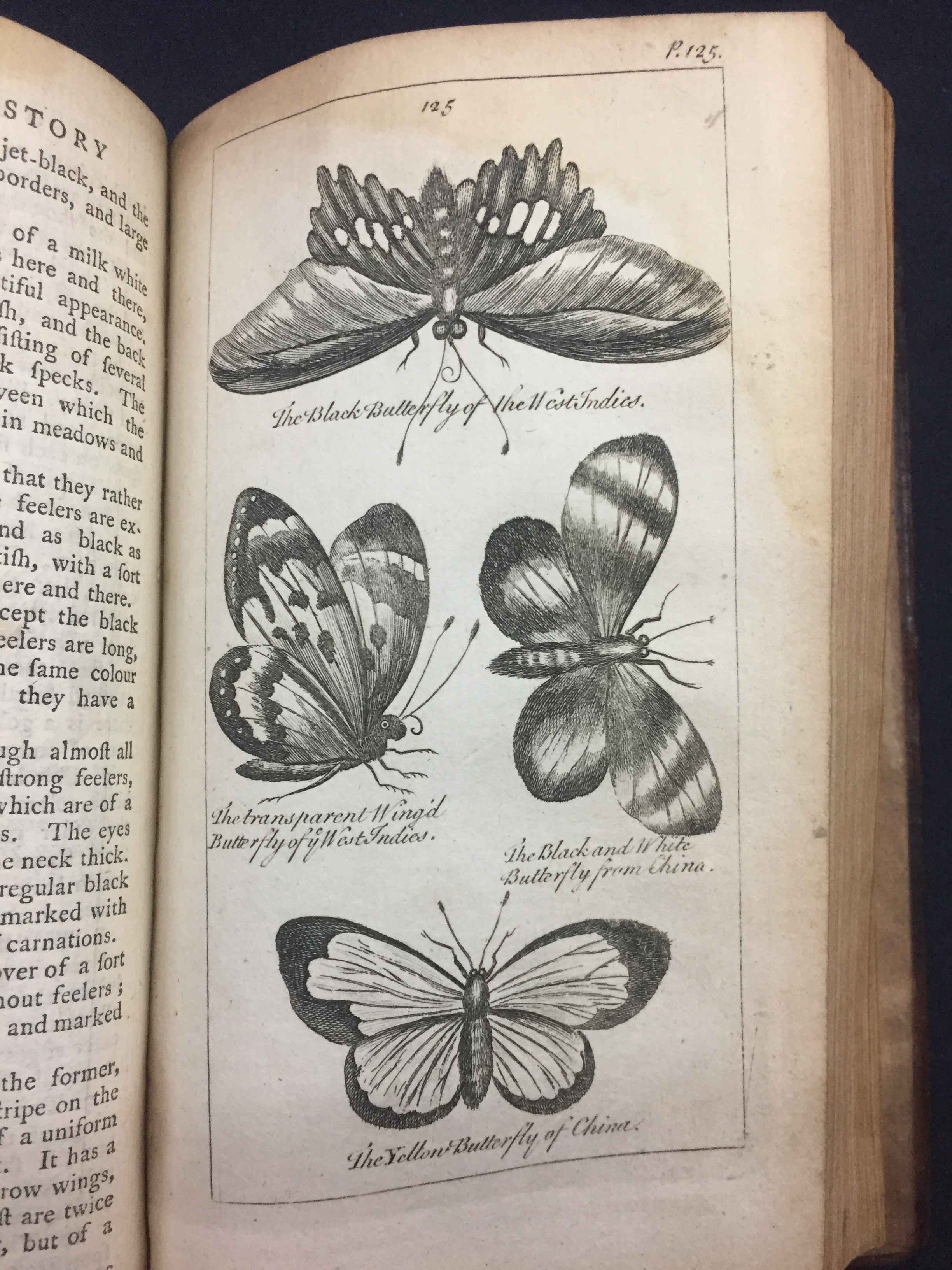
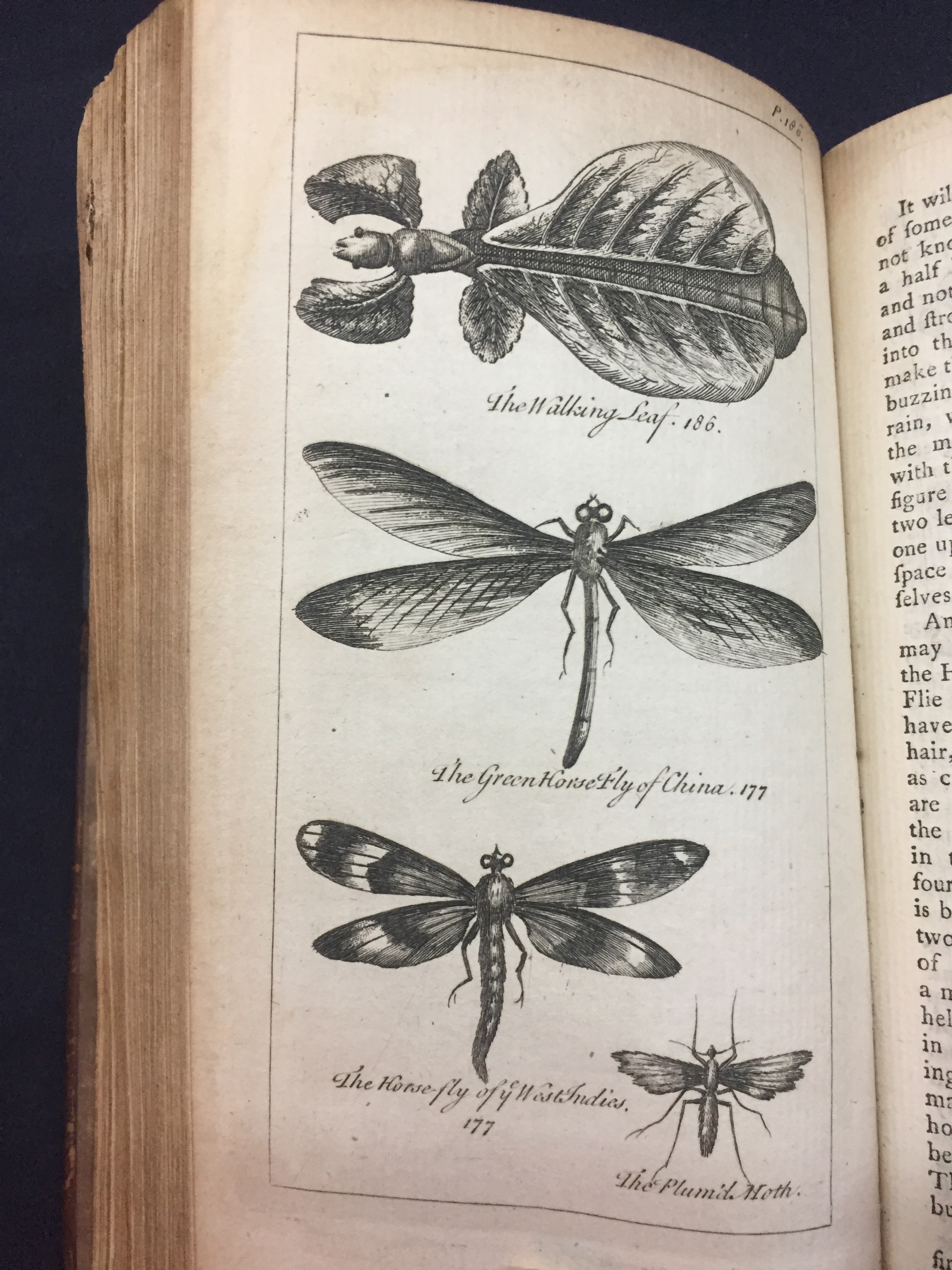
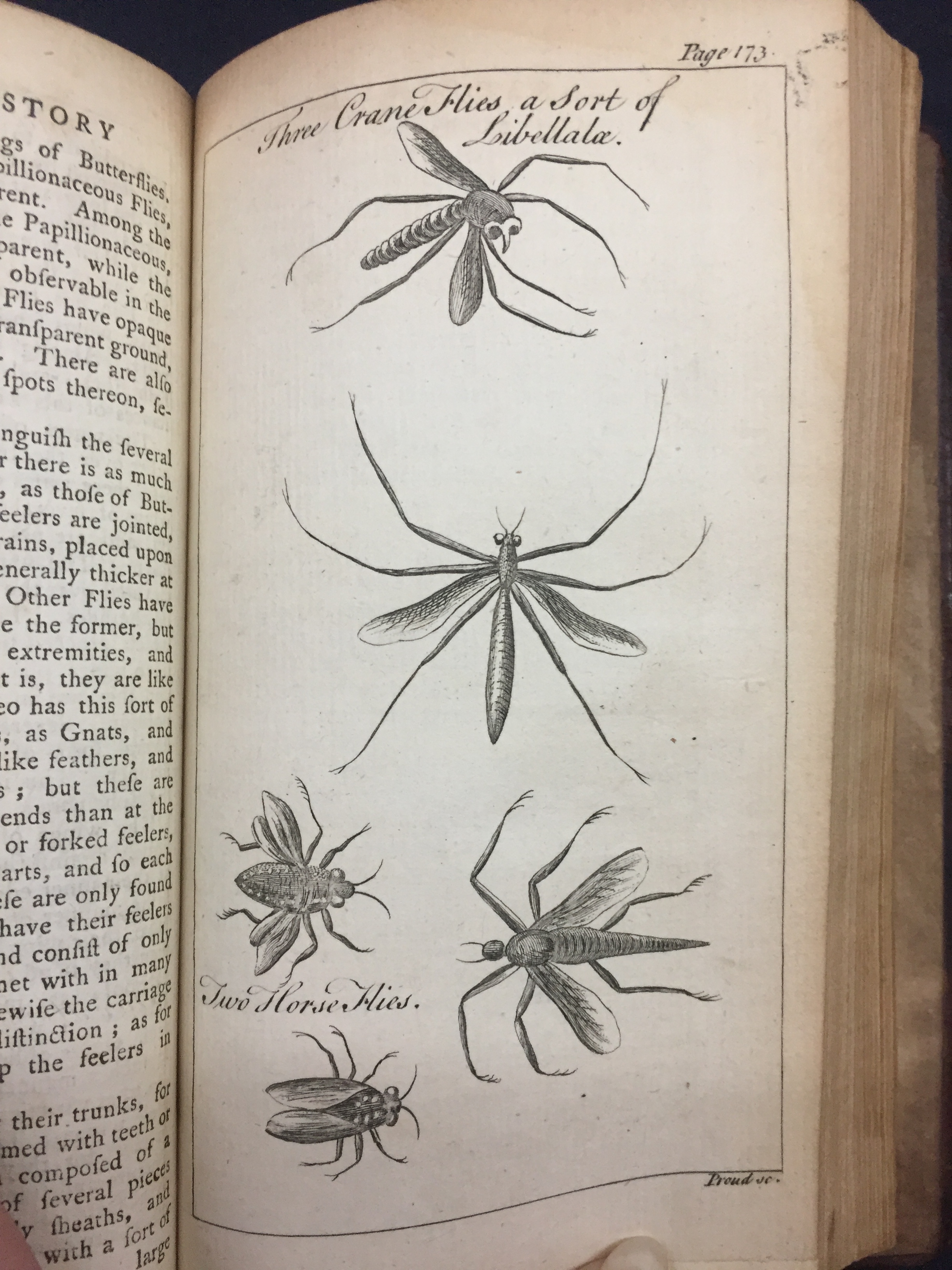
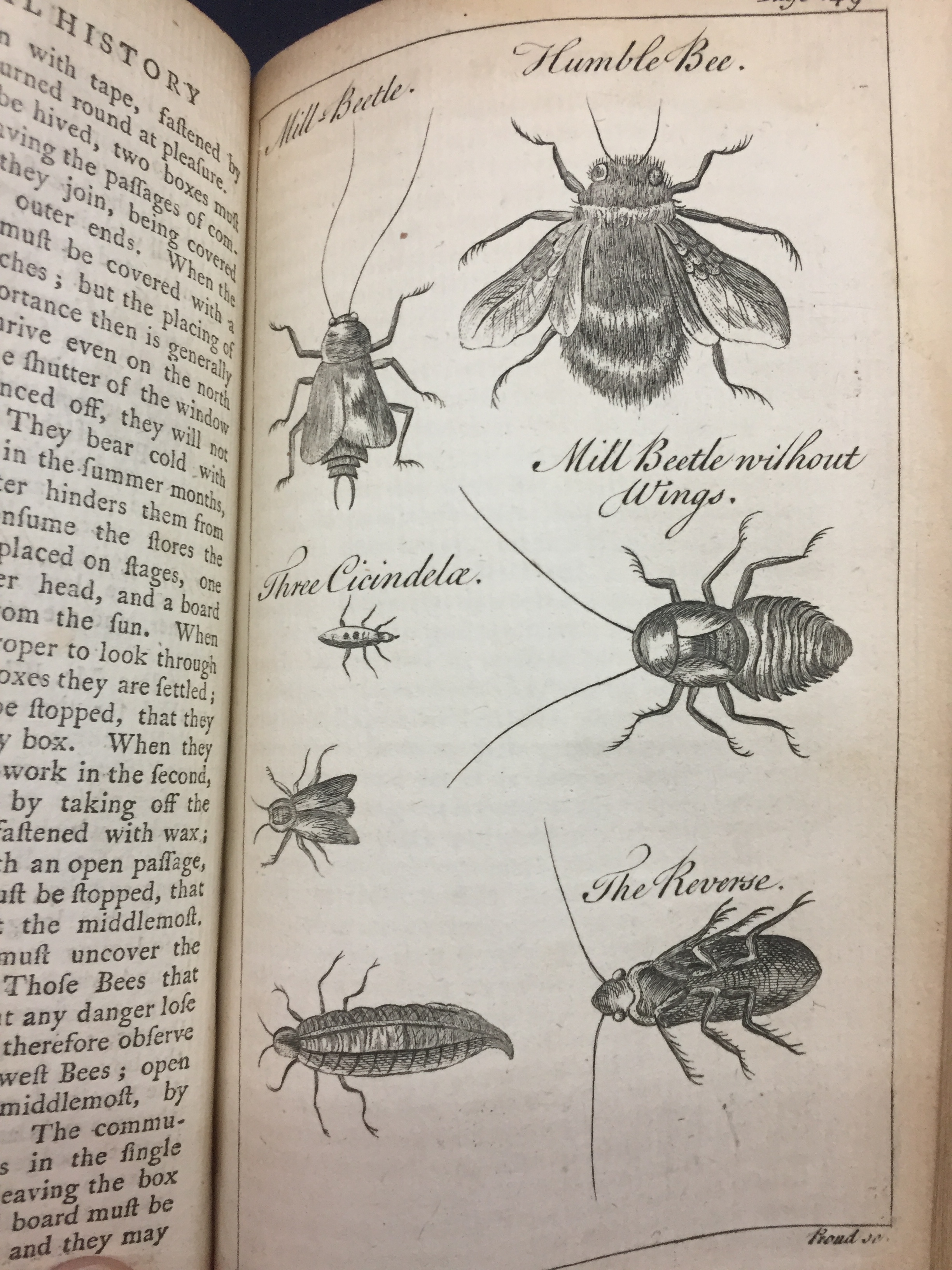
R. Brookes, M.D., The Natural History of Insects with their Properties and Uses in Medicine, Vol IV, 1763. London. Printed for J. Newbery, at the Bible and Sun, in St. Paul’s Church-Yard.
The answer is now of great scientific interest: natural product drug discovery (Seabrooks and Longgin). Most drug research, in a simplified sense, involves scientists fighting against a virus, bacteria, or other biological system. For example, for strain-resistant S. Aureus (bacteria that is resistant to probiotics also called ‘superbugs’) researchers identified, through years of study, a reaction on the chemical level that helped this bacteria resist modern medicine. They are currently designing a method to counteract this chemical change possibly by designing a whole new virus. It’s a long, complicated, and expensive chess game they are playing with these unicellular organisms. Natural product drug discovery, however, utilizes the biological defense systems already perfected by nature. Cockroaches, for example, already seem to have a MRSA (methicillin-resistant S. aureus) defense system (Dell’Amore). All researchers need to do is isolate it. Looking back, this is true for most major drug discoveries. Penicillin was isolated from mold, morphine from poppies, and the cancer drug Taxol from the Pacific yew.
Insects are the untapped goldmine of natural product drug discovery. Most insects have evolutionary histories much older than humans, some even dating back before the dinosaurs. Biologically, this history translates into some very specific molecules that could be very beneficial for human beings. From venoms, to silk strings, to honey, products made by all manner of insects likely have a use in the medical field. Dr. Zoltan Takacs, a toxicologist, explains, “It’s evolution that’s made venom such a good source of drugs. Venom toxins are among the most potent and precision-targeted molecules on Earth” (Nightingale). Remember those spiders that you would evacuate your house for? They might have helped develop a painkiller that you use (Farah). Those beetles that have less than savory appetites? They are helping develop new antibiotics (Farah). Lastly, those maggots with their less than favorable presence, they are being deployed alive to eat away rotting tissue, a traditional medicine practice that was developed by Indigenous Australians, the Maya in Central America, and the Akha people in Yunnan province, China (Church 525).
Works Cited:
Church, John C.T. “The Traditional Use of Maggots in Wound Healing, and the Development of Larva Therapy (Biosurgery) in Modern Medicine.” The Journal of Alternative and Complementary Medicine, vol. 2, no. 4, 1996, pp. 525-7.
Costa-Neto, Eraldo Mederios. “Entomotherapy, or the Medicinal Use of Insects.” Journal of Ethnobiology. vol. 25, no. 1, 2005, pp. 93-114.
Dell’Amore, Christine. “Cockroach Brains May Hold New Antibiotics?” National Geographic, September 11, 2010.
“Doctrine of signatures.” Retrieved from ScienceMusuem.ORG, [http://broughttolife.sciencemuseum.org.uk/broughttolife/techniques/doctrine ]
Farah, Troy. “Drugs from Bugs: Bioprospecting Insects to Fight Superbugs.” Discover, April 13 2018.
Meyer-Rochow, VB. “Therapeutic arthropods and other, largely terrestrial, folk-medicinally important invertebrates: a comparative survey and review.” Ethnogiol Ethnomed, vol. 13, no. 9, 2017.
Nightingale, Kath. “The bite that cures: how we’re turning venom into medicine.” Science Focus, June 29, 2016.
Seabrooks, Lauren and Longgin Hu. “Insects: an underrepresented resource for the discovery of biologically active natural products.” Acta pharmaceutica Sinica. vol. 7, no. 4, 2017, pp. 409-426.
Simon, Matt. “Fantastically Wrong: The Strange History of Using Organ-Shaped Plants to Treat Disease.” Wired, 2014.
Annagh Devitt is the current Education Intern at the International Museum of Surgical Science. She is a student studying chemistry at the University of Chicago. Her interests include the history of medicine, in particular how ethics in medicine has developed throughout history.
